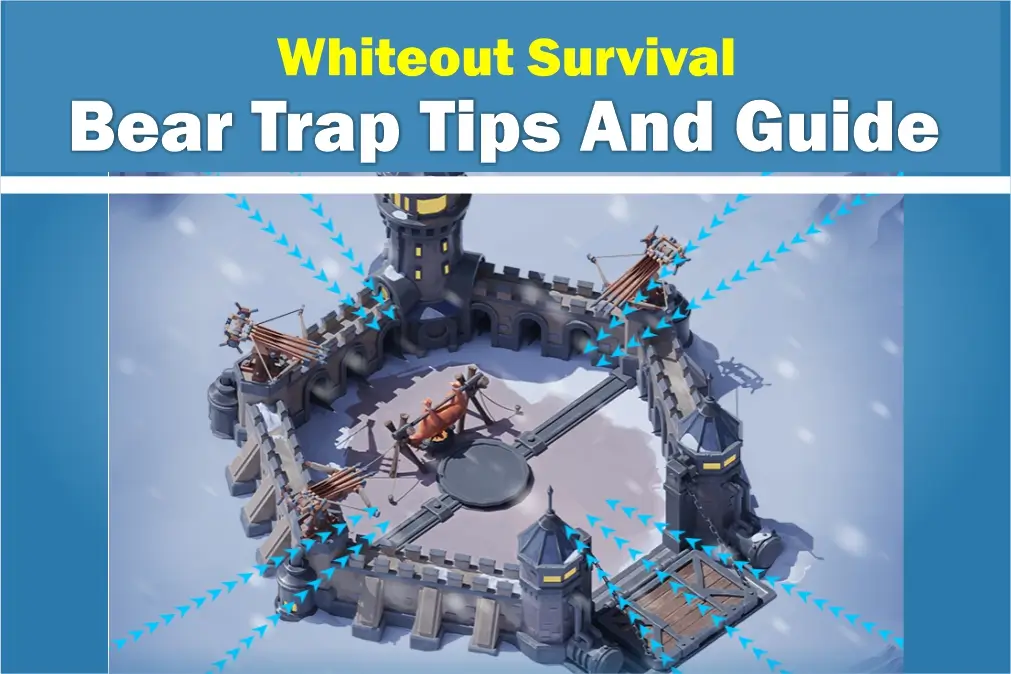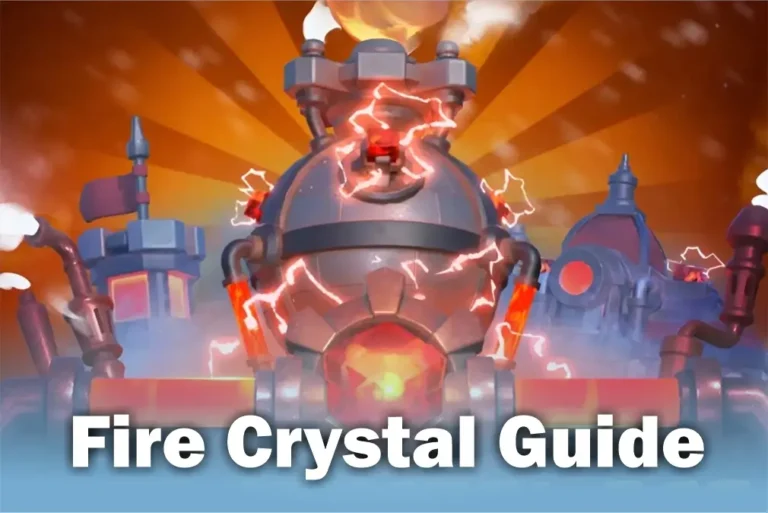Whiteout Survival Bear Trap Tips And Guide

Introduction
In snowy, wild places during winter, staying alive can be really hard. To survive, you need to be smart and ready for anything nature throws at you. One useful tool is the bear trap. It’s great for catching animals to eat when food is scarce. But using a bear trap in a snowstorm takes skill and planning. This guide will teach you all about it, with helpful tips to help you survive in these tough conditions.
Whiteout Survival Bear Trap Tips

Briefly Describe all tips
- Location :
To catch more bears with your traps, put them in places where animals often go. Look for their tracks, poop, or other signs they’ve been around. These are the best spots to set up your traps.
- Bait Selection:
Choosing the right bait is crucial for attracting target prey. In whiteout conditions, where visibility is limited, potent-smelling baits like fish or meat can be particularly effective.
- Camouflage and Concealment:
Concealing bear traps beneath a thin layer of snow or natural debris enhances their effectiveness while minimizing the risk of detection by wary animals.
- Regular Maintenance:
Routinely inspecting and maintaining bear traps ensures their optimal functionality. Clearing away snow and debris and checking for damage or malfunctions is essential for maximizing trapping success.
- Patience and Persistence:
Whiteout survival requires patience and perseverance. Regularly checking traps and adjusting strategies based on observations and environmental conditions can significantly improve trapping outcomes.
Whiteout Survival Bear Trap Guide:
Navigating a whiteout survival environment presents unique challenges that necessitate adaptability and resourcefulness. When deploying bear traps in such conditions, it’s essential to consider the following factors:
- Weather Conditions:
The extreme cold and reduced visibility characteristic of whiteouts can impact trap functionality. Opt for durable materials and designs that can withstand harsh weather conditions.
- Animal Behavior:
Understanding the behavior patterns of target prey species is key to effective trapping. Researching feeding habits, migration routes, and territorial markers can inform trap placement and bait selection.
- Safety Precautions:
Prioritize safety when setting and checking bear traps in whiteout conditions. Wear appropriate cold-weather gear, use caution when handling traps, and avoid placing traps in high-traffic human areas to prevent accidental injuries.
Whiteout Survival Bear Trap Cooldown:
Even the best whiteout survival experts face problems when it’s snowy and hard to see. If you hit a rough patch—like bad weather, running out of supplies, or not catching anything—don’t give up. Take this time to think about what’s going wrong, get more supplies, and strengthen your shelter. Remember, being patient and able to change your plans are super important for surviving in the long run.
Whiteout Survival Bear Trap Layout:
Designing an effective bear trap layout in a whiteout environment requires careful consideration of terrain features, animal behavior, and trapping objectives. Here are some key elements to keep in mind:
- Strategic Placement:
To maximize trapping opportunities, distribute bear traps across diverse habitats. Focus on natural chokepoints, water sources, and sheltered areas frequented by wildlife.
- Interconnected Network:
Establish a network of interconnected traps to cover a wider area and increase the likelihood of trapping success. Coordinate trap placement to create a seamless trapping grid that capitalizes on animal movement patterns.
- **Diversified Baiting
Experiment with a variety of baits and lures to attract different species and diversify trapping outcomes. Incorporate natural scents and pheromones to enhance bait effectiveness and entice elusive prey.
Troop Formation Tips for the Bear Trap
When you’re arranging your team, notice that the first hero slot is different from the other two. This is because, in someone else’s group, the first hero you choose is the one whose top right skill will be used in the team’s bonus lineup.
There are only two heroes, Jessie and Jeronimo, who have a skill that boosts troop damage by 25% as their first skill.
As I mentioned earlier, all the captain’s heroes and their stats count, along with four other heroes who join the group. The four heroes whose skills are chosen will depend on their level. For example, a level five skill is better than a level four skill, and a mythic hero’s level five skill is better than an epic hero’s level five skill.
To see what your team looks like, go to the rallies page and click on the yellow flag at the top right corner of the list of players. This will show all the captain’s stats, and if you scroll down, you’ll see all the heroes’ skills, including the four selected teammates’ heroes.
Both Jessie and Jeronimo’s skills add up with others, so if you send them to the strongest rally, you’ll maximize your damage. If you have four of them together, you get a 100% damage bonus!
The easiest way to ensure that only Jessie is among the selected four is for everyone to send Jessie to the rally.
If you’ve already sent your Jessie team to someone else and want to join another strong rally without messing up the Jessie lineup, you have two options. If your first hero’s first skill is level four or lower, you won’t replace someone else’s level five Jessie. But once all heroes have level-five skills, you’ll need to use a rare (blue) hero first instead. Epic heroes are more important than rare heroes.

Conclusion
Mastering the bear trap in whiteout survival scenarios requires a combination of skill, strategy, and adaptability. By leveraging the insights and tips outlined in this guide, survivalists can enhance their trapping proficiency and increase their chances of success in the unforgiving wilderness. Remember, in the face of nature’s formidable challenges, preparation, perseverance, and teamwork are the keys to survival.






